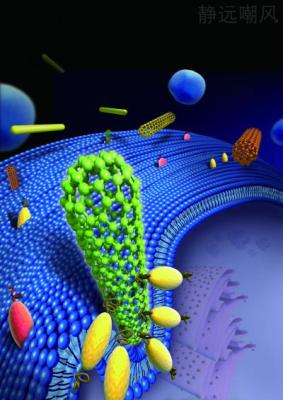Brown University researchers have revealed the mystery behind the interest of cells towards asbestos fibers and similar materials at the nanoscale even though they cannot be completely ingested by the cells.
 Perpendicular Perplexity
Perpendicular Perplexity
During their study using molecular experiments and simulations, the researchers observed that nanomaterials like carbon nanotubes entered the cells with tip first and perpendicularly most of the times. The cell, which is fooled by the orientation of the nano-tip, ingests the rounded tip assuming that it is a sphere rather than a lengthy cylinder. The cell comes to the realization that the nanotube is actually long and cannot be ingested completely; very late.
The study is vital in understanding the interaction of nanomaterials with cells so that researchers can develop nanomedicines that assist cells rather than damage them. Commercial gold nanowires and carbon nanotubes have rounded tips with a diameter between 10 and 100 nm that can be suitably handled by the cells. During their contact with the nanotubes, unique proteins known as receptors on the cell get triggered to action, cluster together and bend the wall of the membrane to cover the cell around the tip of the nanotube in a sequence known as‘tip recognition’. When this happens, the nanotube is tipped perpendicularly and decreases the energy required for the cell to intake the nanoparticle.
Misrecognition
Huajian Gao, one of the researchers, stated that when the cell realizes that it is not possible to ingest the nanostructures completely, it calls for assistance, resulting in the activation of an immune response that can produce repetitive inflammation. The researchers desire to investigate whether nanotubes that do not have rounded tips or less rigid nanomaterials like nanoribbons can cause the same problem for cells.